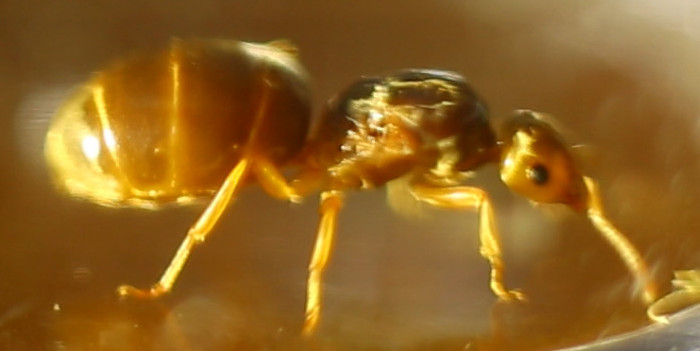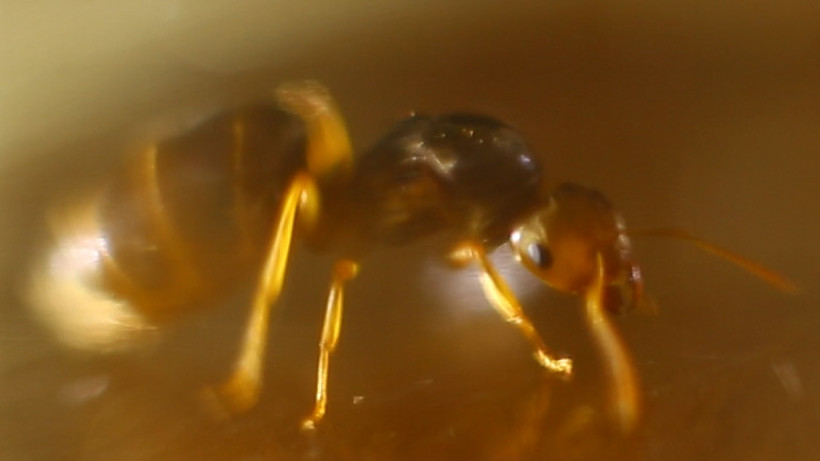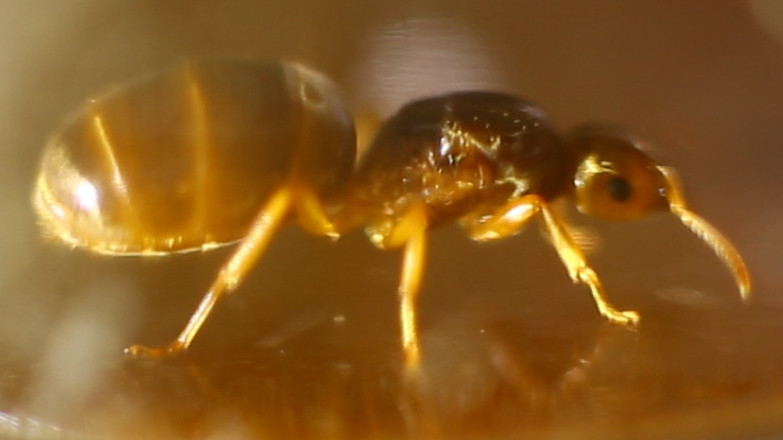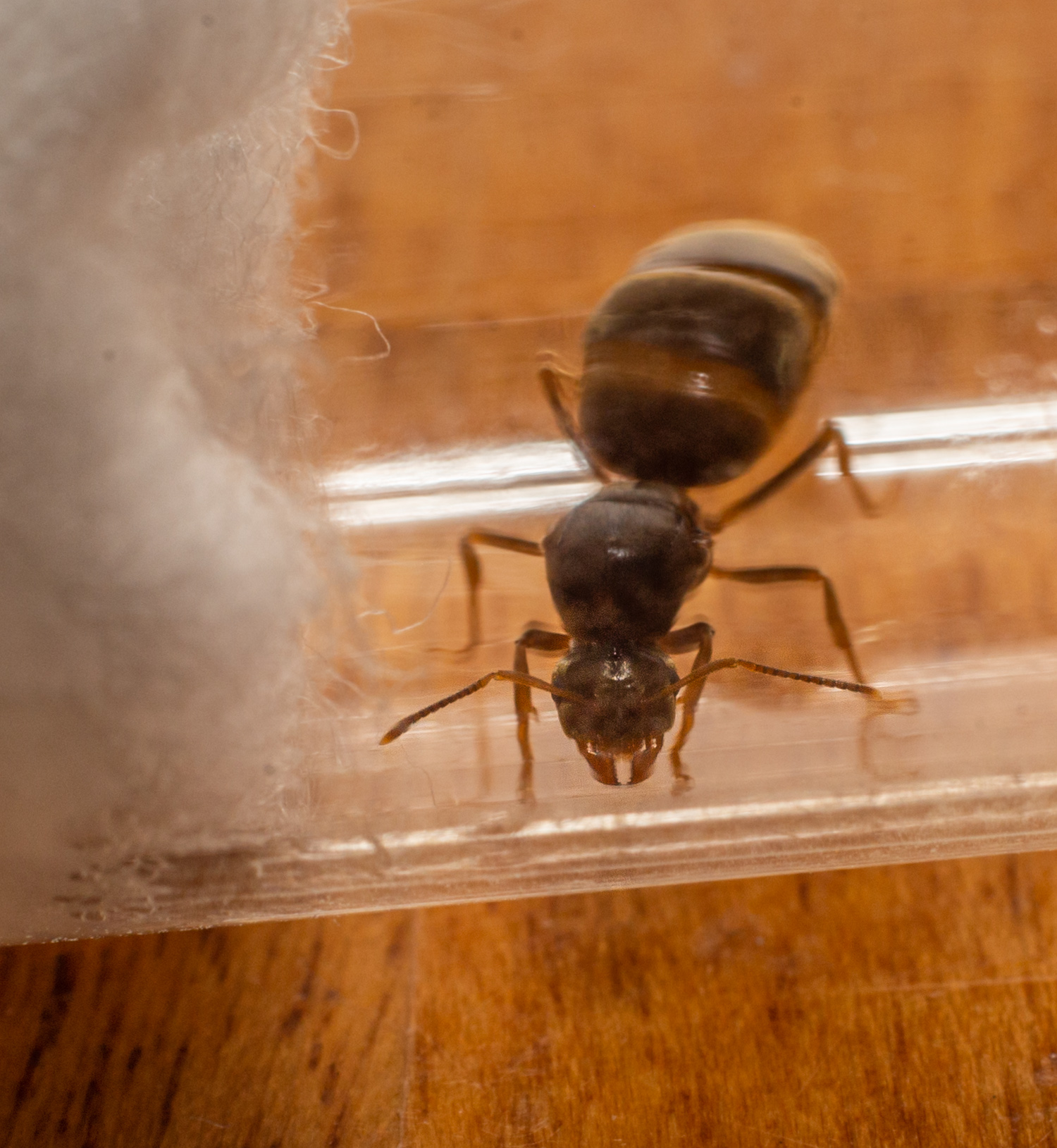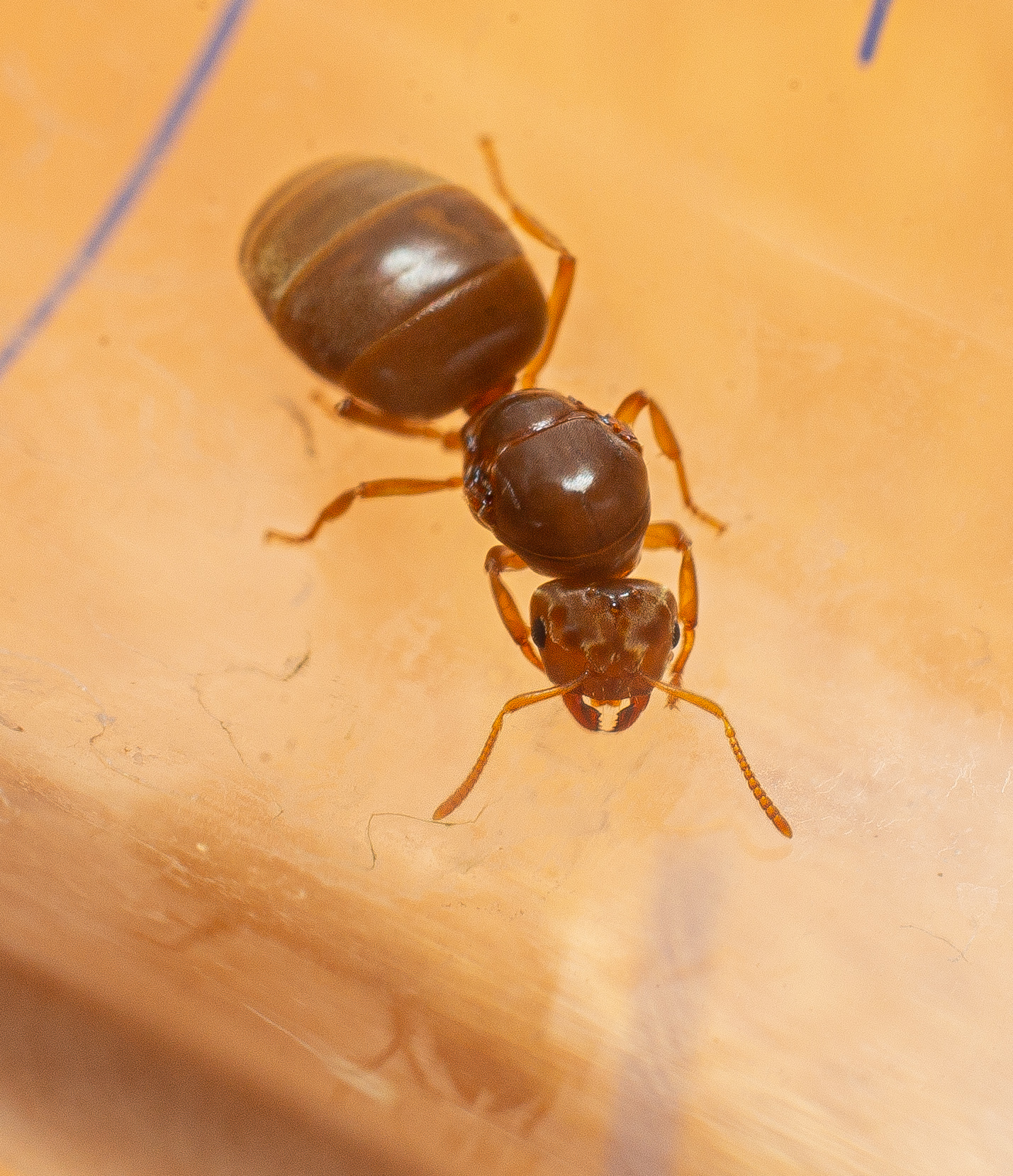- Formiculture.com
- Forums
- Gallery
- Members
- Member Map
- Chat
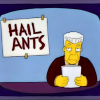
ID Possible Lasius Queen, Eastern Ontario, Canada (9/11/2024)
Started By
Hank.Scorpio
, Sep 10 2024 10:25 PM

Best Answer OiledOlives , September 11 2024 - 5:10 AM
Lasius (Cautolasius), likely L. brevicornis in a suburban area. Not in a "neoniger complex", which is a taxonomic term I have never heard of.
Go to the full post
9 replies to this topic
#1
 Offline
-
Posted September 10 2024 - 10:25 PM
Offline
-
Posted September 10 2024 - 10:25 PM
Location/Habitat: Suburb
Date of collection: Wed 14 Aug 2024
Length: ~8mm
Nuptial flight time: Wed 14 Aug 2024 ~6:30-7pm landing time
Appears to be a Lasius queen, but does anyone have an idea of the species or it's possible quirks such as being parasitic?
Caught several of these the evening of the flight, then another the following day digging a hole around some brickwork and gravel.
- UtahAnts likes this
#2
 Offline
-
Posted September 11 2024 - 4:31 AM
Offline
-
Posted September 11 2024 - 4:31 AM
I can not guarantee what species of Lasius that is, but it is definitely in the neoniger complex. It is also not parasitic, and is fully claustral.
Go to the ant, you sluggard; consider its ways and be wise! It has no commander, no overseer or ruler, yet it stores its provisions in summer and gathers its food at harvest. -Proverbs 6: 6-8
My Ant Shop Here I have PPQ-526 permits to ship ants nationwide
Attention Ant-Keepers in South Dakota! Join the SoDak(Society Of Dakotan Ant Keepers)
#3
 Offline
-
Posted September 11 2024 - 5:10 AM
Best Answer
Offline
-
Posted September 11 2024 - 5:10 AM
Best Answer
Lasius (Cautolasius), likely L. brevicornis in a suburban area. Not in a "neoniger complex", which is a taxonomic term I have never heard of.
#4
 Offline
-
Posted September 11 2024 - 5:44 AM
Offline
-
Posted September 11 2024 - 5:44 AM
Lasius (Cautolasius), likely L. brevicornis in a suburban area. Not in a "neoniger complex", which is a taxonomic term I have never heard of.
I believe he was referring to the term niger complex. Take this excerpt from AntWiki: "Wilson (1955) - The worker is best distinguished by its abundant standing appendage pilosity combined with the clypeal outline and mandibular dentition characteristic of the "niger complex" (Lasius niger, Lasius alienus, Lasius emarginatus, Lasius productus)." Note this is out of date, as North American alienus is now americanus, etc., though I believe that general species group is what he was referring to.
- Ants_Dakota likes this
"God made..... all the creatures that move along the ground according to their kinds (including ants). And God saw that it was good. Genesis 1:25 NIV version
Keeping:
Formica cf. pallidefulva, cf. incerta, cf. argentea
Formica cf. aserva, cf. subintegra
Myrmica sp.
Lasius neoniger, brevicornis
#5
 Offline
-
Posted September 11 2024 - 8:29 AM
Offline
-
Posted September 11 2024 - 8:29 AM
Lasius (Cautolasius), likely L. brevicornis in a suburban area. Not in a "neoniger complex", which is a taxonomic term I have never heard of.
Why I don't do ID's :facepalm:I think the coloration of the whole image threw me off
Edited by Ants_Dakota, September 11 2024 - 8:31 AM.
Go to the ant, you sluggard; consider its ways and be wise! It has no commander, no overseer or ruler, yet it stores its provisions in summer and gathers its food at harvest. -Proverbs 6: 6-8
My Ant Shop Here I have PPQ-526 permits to ship ants nationwide
Attention Ant-Keepers in South Dakota! Join the SoDak(Society Of Dakotan Ant Keepers)
#6
 Offline
-
Posted September 11 2024 - 8:30 AM
Offline
-
Posted September 11 2024 - 8:30 AM
Lasius (Cautolasius), likely L. brevicornis in a suburban area. Not in a "neoniger complex", which is a taxonomic term I have never heard of.
I believe he was referring to the term niger complex. Take this excerpt from AntWiki: "Wilson (1955) - The worker is best distinguished by its abundant standing appendage pilosity combined with the clypeal outline and mandibular dentition characteristic of the "niger complex" (Lasius niger, Lasius alienus, Lasius emarginatus, Lasius productus)." Note this is out of date, as North American alienus is now americanus, etc., though I believe that general species group is what he was referring to.
Yes, i attempted to "revise" it by referring to them by their north american ID names so that American ant keepers can correctly ID. I shall correct it to neoniger/niger group in the future. But, as it appears I did not ID correctly, there is no need to pay attention to my post.
Edited by Ants_Dakota, September 11 2024 - 9:23 AM.
Go to the ant, you sluggard; consider its ways and be wise! It has no commander, no overseer or ruler, yet it stores its provisions in summer and gathers its food at harvest. -Proverbs 6: 6-8
My Ant Shop Here I have PPQ-526 permits to ship ants nationwide
Attention Ant-Keepers in South Dakota! Join the SoDak(Society Of Dakotan Ant Keepers)
#7
 Offline
-
Posted September 13 2024 - 1:13 AM
Offline
-
Posted September 13 2024 - 1:13 AM
Thank you everyone.
#8
 Offline
-
Posted September 13 2024 - 7:56 AM
Offline
-
Posted September 13 2024 - 7:56 AM
Seconding Cautolasius. If you can get a photo that shows the head shape in full face view and the scape length (best seen with the scape held in repose, towards the back of the head), it should help distinguish between L. brevicornis and L. nearcticus.
#9
 Offline
-
Posted September 13 2024 - 7:58 AM
Offline
-
Posted September 13 2024 - 7:58 AM
You can also compare them to pictures from my journal here.
Go to the ant, you sluggard; consider its ways and be wise! It has no commander, no overseer or ruler, yet it stores its provisions in summer and gathers its food at harvest. -Proverbs 6: 6-8
My Ant Shop Here I have PPQ-526 permits to ship ants nationwide
Attention Ant-Keepers in South Dakota! Join the SoDak(Society Of Dakotan Ant Keepers)
#10
 Offline
-
Posted September 23 2024 - 8:58 PM
Offline
-
Posted September 23 2024 - 8:58 PM
Seconding Cautolasius. If you can get a photo that shows the head shape in full face view and the scape length (best seen with the scape held in repose, towards the back of the head), it should help distinguish between L. brevicornis and L. nearcticus.
I got someone to take more photos, this time with better clarity. Unsure if these photos of the scape would suffice for identification. It's tricky getting things just right.
You can also compare them to pictures from my journal here.
I checked out your journal and they do indeed look similar, I took note of how you were keeping multiple in the same tube and attempted the same thing. I had contrasting results with the alate and dealate queens. Placing the alates together caused no troubles, they grouped up and didn't seem to mind one another. The dealates on the other hand showed signs of aggression, with the defender flaring their mandibles and lunging at the invader. The invader wanted nothing to do with this and made a speedy retreat out of the tube. I tried this a few times with different queens to the same result.
0 user(s) are reading this topic
0 members, 0 guests, 0 anonymous users



